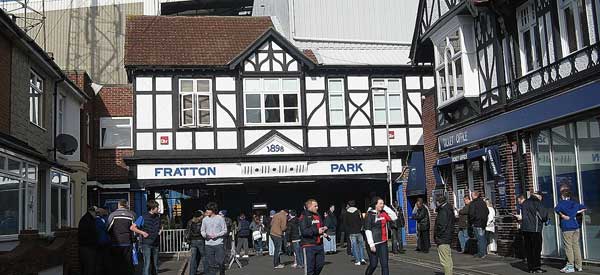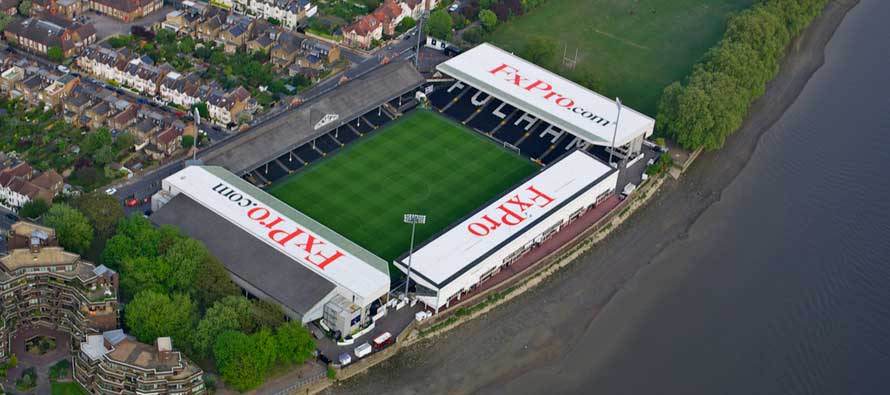From the Swindon team in 1993, which conceded 100 goals in its sole Premier League campaign, to the infamous Derby squad of 2007/08 that just barely scraped double figures in the points column, the Premier League has seen many a newly-arrived team realise that they may have been promoted several years too early.
In some cases, however, it has not been a lack of quality on the field that has made certain clubs think of their promotion to the top-flight as premature. Sometimes it is their stadiums that have proven unprepared for the demands of the Premier League, and its biggest visiting fanbases. Here are three such examples:
Leicester City – Filbert Street
Leicester first graced the modern Premier League in 1994, a year after playoff final heartbreak against the aforementioned Swindon. The contrast between the club now, and how it existed 25 years ago is truly startling.
In 2016, Leicester City became Champions at staggering odds of 5000/1, giving them the opportunity to forge vital ‘next-level’ corporate partnerships in addition to the riches promised by UEFA Champions League participation. Back in 1994, however, the Foxes were favourites to go straight down, and did exactly that, finishing second-bottom.
Leicester’s first-ever Premier League match was a televised affair, coming against the high-flying Newcastle United, with the packed away end showing just how much a ground move was already needed.
That 3-1 defeat to the Magpies was a sign of form to come at Filbert Street in the ground’s rookie Premier League season. Nonetheless, victories over the much-esteemed Tottenham and Arsenal were clear highlights, though Leicester managed just two victories at Filbert Street after the New Year.
Alongside Filbert Street’s lopsided nature, another of its quirks was the entrance to the South Stand (and the away section), sitting right in the middle of a row of terraced houses. Even here and now, in 2020, Championship side Luton Town’s ground, Kenilworth Road, has such a feature, leading into the Oak Stand.
Fulham – Craven Cottage
The rise of Fulham from the depths of the fourth tier to the Premier League in just four years is a story in itself. Such was the sudden success of Fulham, that they were required to vacate Craven Cottage after a mid-table finish in their maiden Premier League season (2001/02) and play for two seasons at nearby Loftus Road, the ground of QPR.
The reason for this was starkly simple. During 2001/02, the stadium would become notable for being the last to have standing terraces in parts of the grounds, a whole eight years after the Taylor Report had forced Premier League teams to replace all terraced areas with seating.
Nonetheless, the ground acted as a huge fillip for the Cottagers, who lost only to the previous campaign’s top three (Arsenal, Liverpool and Manchester United) at Craven Cottage inside their first 15 home league games of 2001/02.
Portsmouth – Fratton Park
After narrowly avoiding relegation to the third tier just two years prior, Portsmouth soared into the Premier League as second-tier winners. Their underdog triumph came at a price though, with Fratton Park quickly becoming the away fan’s least-favourite ground on account of the minimal leg room and the lack of a roof above the Milton End.
While this was less of an issue in the gentler months, few can forget the sight of Leeds fans – in the process of watching their ailing club hammered 6-1 in relentless November drizzle – being soaked to the skin to compound their misery. Other visiting fans endured the same test of their resolve, until 2007 finally marked the construction of a new roof.

Caption: Fratton Park’s most famous feature is a turnstile housed within a mock tudor façade.
As one of the most cramped stadiums in the top tier during 2003/04, the dressing rooms would be correspondingly spartan for away sides. Whatever impact that had is open to interpretation, but during 2003/04 Portsmouth won on their Premier League home debut by a 2-1 scoreline against Aston Villa and registered a a brace of victories over Liverpool – both in an October league meeting and an FA Cup clash in February.
Those victories over the red half of Merseyside also preceded a famous win against champions Manchester United in April. The crowning glory was, however, was a 1-0 triumph against Southampton that rocked the stadium to its ancient foundations!

